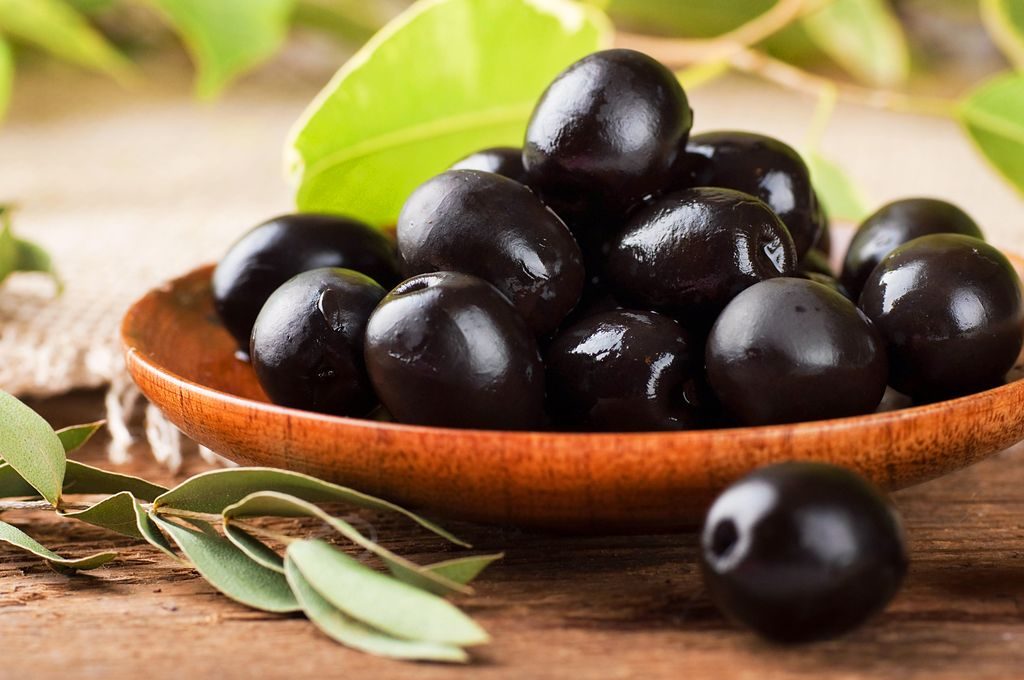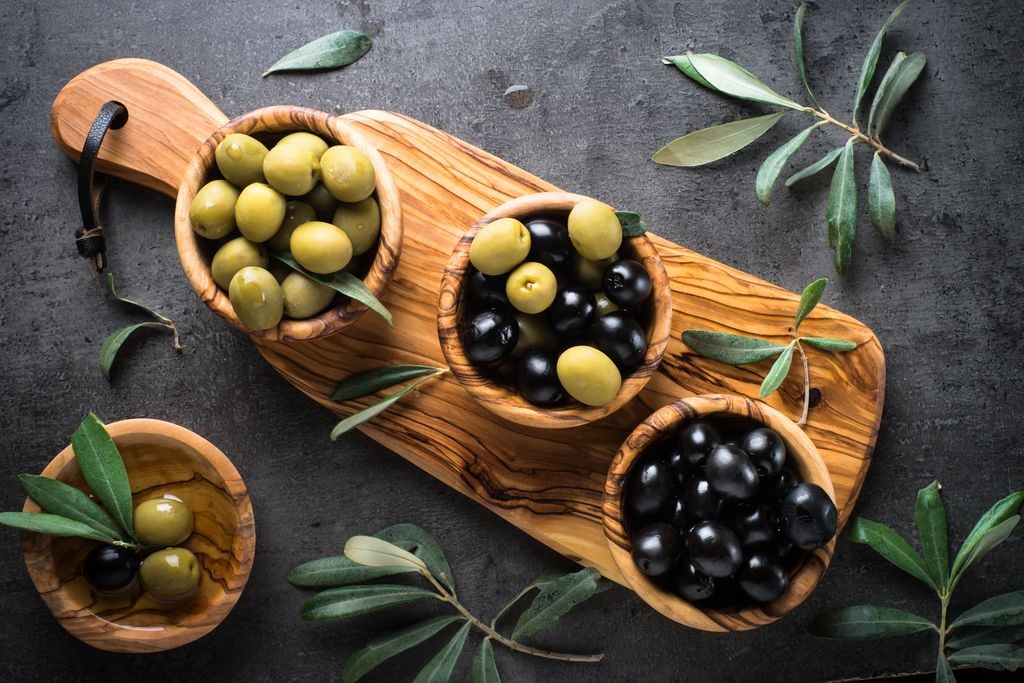Black olives
Black olives are wonderful in dishes or as a part of an antipasto board along with some fresh bread, meats and cheeses.

Black olives are small fruit native to the Mediterranean. They are either used as an ingredient or eaten as a snack. Raw olives are extremely bitter and are inedible.
Black olives can vary in shape, size and colour – ranging from dark purple to deep black. They are usually round or oval-shaped with a hard stone (pit) in the middle (which some producers chose to remove).
Black olives feature heavily in many Mediterranian cuisines; they are used in salads, as a pizza topping, in bread like focaccia, pasta sauces, stews or eaten on their own as part of an antipasto.
Black olives are also used to make tapenade which is an Italian dipping sauce. There’re many different variations but it usually contains olives, capers, salted anchovies and garlic finely chopped and topped off with olive oil.
Olives can be cured in brine, water, in salt and with lye. After cured or fermented olives are sold marinated in wine vinegar, olive oil or dry salted. They are either sold in jars or canned and last 12 to 18 months once opened if kept in the fridge.
What’s the difference between green and black olives?

A surprising fact about olives is that black and green olives come to form the same tree!
Most olives start out green and turn black as they ripen. Green olives are picked in October or November while black olives are picked later in the year in December when they are fully ripe. When harvested both green and black olives are submerged in brine for about 12 months. They ferment in this time developing their flavour and making them edible.
The processing methods also contribute to the taste, colour and the look of the olives.
Some olives (usually the one you get in cans) are cured with lye before cured in brine. Lye is used to speeding up the process. Most canned black olives are actually green olives dyed during the processing method. These olives tend to be quite tasteless in comparison to naturally cured olives.
Green and black olives are very similar nutritionally but green olives tend to have a higher salt content.
Nutritional information of black olives
Olives are widely praised for their health benefits as they are loaded with essential nutrients. They are rich in healthy fats, vitamins and low in calories.
There are about 235 calories per 100 grams of olives. They are also very high in dietary fibre which helps with digestion.
Olives are rich in the monounsaturated fat ‘oleic acid’ making olives keto-friendly. The total fat content is about 11-15%. Some studies have concluded that oleic acid can decrease inflammation and reduce your risk of developing heart disease as it helps lower your cholesterol levels.
Black olives are very high in vitamin E, vitamin A, iron, copper and calcium. Olives contain an antioxidant called hydroxytyrosol, this is known to be a strong anti-inflammatory.
Consuming olives while pregnant is completely safe. They are rich in antioxidants which may help to protect your child from developing some allergies and asthma. Although they tend to be high in sodium which is important to consider while pregnant
It is important to remember that the nutritional value may differ depending on how the olives are cured, flavours and packaged. For more information please consult the label.
Recipe suggestions: Focaccia




